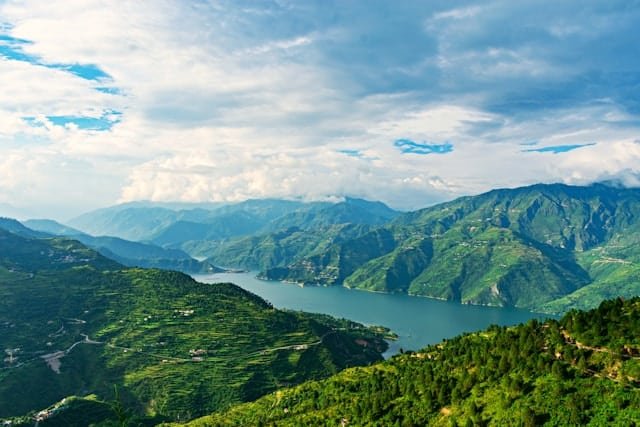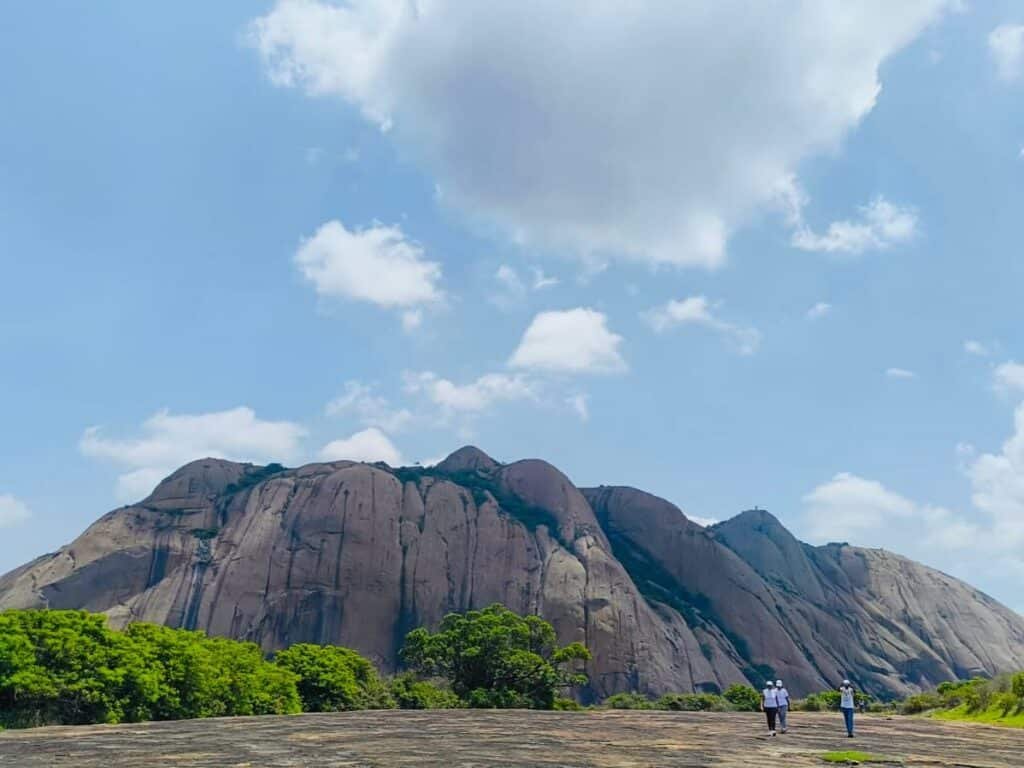Table of Contents
Introduction to Taj Mahal Agra
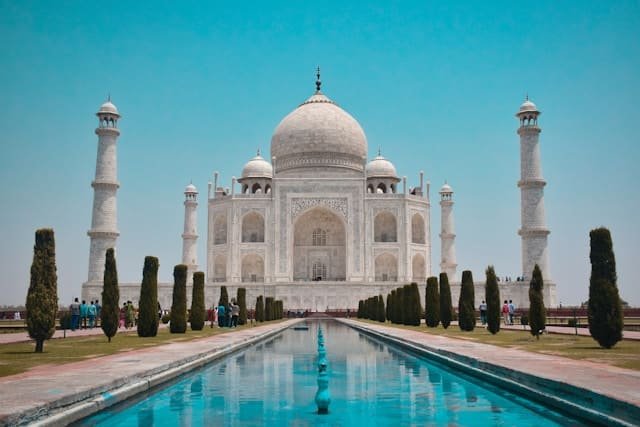
Taj Mahal Agra, a prominent city located in the northern Indian state of Uttar Pradesh, is renowned for its historical and cultural significance. Situated on the banks of the Yamuna River, Agra lies approximately 200 kilometers southeast of the national capital, New Delhi. With a population of over 1.5 million residents, it is one of the largest cities in Uttar Pradesh, serving as a vital economic and cultural hub in the region.
Historically, Taj Mahal Agra has been a focal point of India’s rich heritage, particularly during the Mughal era when it thrived as the capital of the Mughal Empire. The city houses some of the most iconic structures in the world, epitomizing the exquisite Indo-Islamic architecture. Among these, the Taj Mahal stands as a symbol of love and admiration, drawing millions of tourists each year. The grandeur of Agra Fort, an imposing structure that served as a royal residence, further enhances the city’s historical narrative. Additionally, Fatehpur Sikri, a UNESCO World Heritage Site, showcases Mughal architectural brilliance and serves as a testament to the era’s cultural advancements.
Agra’s significance extends beyond its historical landmarks; it plays a crucial role in the contemporary fabric of Uttar Pradesh. The city’s economy heavily relies on tourism, with visitors flocking to admire its UNESCO-listed monuments. Moreover, Agra is known for its vibrant handicrafts, especially marble inlay work, which attracts both local and international buyers. The fusion of Agra’s rich past with its modern-day relevance makes it an intriguing destination, offering insights into India’s historical evolution and cultural diversity.
As we delve deeper into Agra, we will explore the remarkable heritage sites and modern-day experiences that contribute to the city’s unique character within Uttar Pradesh, making it a vital segment of India’s historical and cultural heart.
Historical Significance of Agra
Taj Mahal Agra, a city in Uttar Pradesh, India, boasts a rich historical tapestry that dates back to its founding in the 16th century by Sultan Sikandar Lodi. The city was strategically located along the banks of the Yamuna River, making it an attractive option for rulers seeking political and economic stability. Agra quickly emerged as a prominent center, particularly during the Mughal Empire, where it served as a capital under influential emperors such as Akbar, Jahangir, and Shah Jahan.
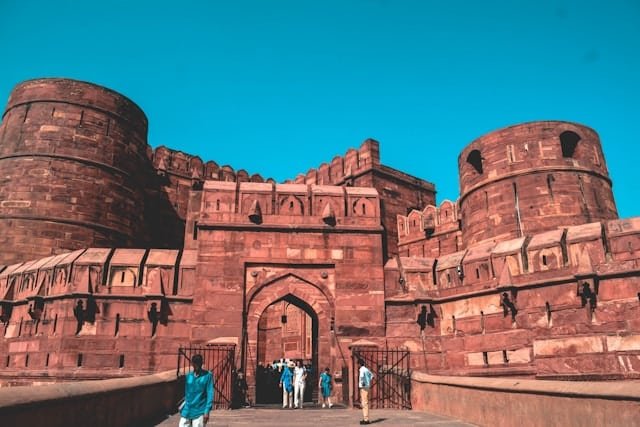
The reign of Akbar (1556-1605) marked a significant turning point for Agra. He transformed the city into a flourishing hub of culture and architecture, as evidenced by the construction of several monumental structures, including the iconic Agra Fort. This fort, a UNESCO World Heritage site, exemplifies the grandeur of Mughal architecture and served as the primary stronghold for the emperors, showcasing a synthesis of military prowess and artistic expression. Under Akbar’s rule, Agra became a melting pot for diverse cultures, fostering an environment of tolerance and innovation.
Jahangir and Shah Jahan further enriched Agra’s cultural landscape, culminating in the creation of the world-renowned Taj Mahal. This mausoleum, built by Shah Jahan in memory of his beloved wife Mumtaz Mahal, symbolizes the epitome of Mughal artistry and continues to attract millions of visitors annually. Agra also played a notable role during the Indian Rebellion of 1857, where the fort was a significant site for military confrontations between British forces and Indian soldiers. This pivotal uprising spurred significant changes in India’s colonial governance.
Overall, the historical significance of Agra extends beyond its monumental architecture; it reflects the city’s transformation into a center of cultural and political power during the Mughal era, leaving an indelible mark on Indian history.
The Mughal Architectural Legacy
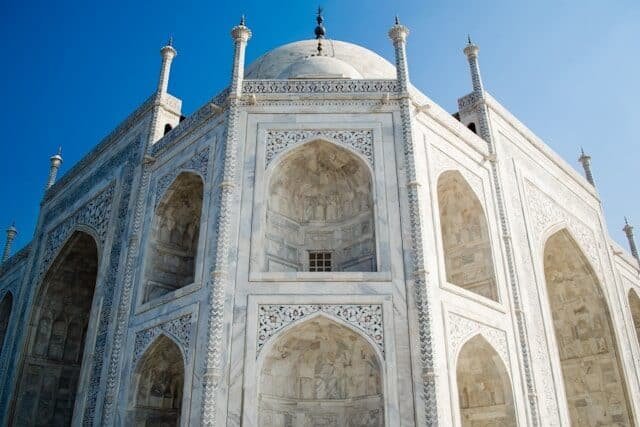
Taj Mahal Agra, Uttar Pradesh, is renowned for its rich Mughal architectural legacy, which reflects the grandeur and artistic prowess of the Mughal Empire. Among the remarkable structures in this city is the Taj Mahal, a UNESCO World Heritage site, celebrated for its breathtaking beauty and intricate craftsmanship. Built by Emperor Shah Jahan in memory of his beloved wife, Mumtaz Mahal, the Taj Mahal is often described as a symbol of eternal love. Its white marble façade, adorned with stunning inlay work of semi-precious stones, epitomizes the zenith of Mughal architecture and has captivated millions of visitors from around the globe.
In addition to the Taj Mahal, the Agra Fort stands as a testament to the strategic architectural advancements of the time. Originally constructed by the Mughal Emperor Akbar in the late 16th century, this historical fort showcases a unique blend of Indo-Islamic architectural styles. The fort’s massive red sandstone walls and elegantly designed palaces, such as the Jahangir Mahal and the Khas Mahal, echo the rich history and the power vested in the Mughal rulers. Each corner of the fort offers a glimpse into the past, with intricate carvings and impressive courtyards narrating stories of a glorious era.
Fatehpur Sikri, a nearby city, also boasts significant architectural heritage. Built by Akbar as the capital of his empire in the late 16th century, it is another UNESCO World Heritage site that features an array of remarkable structures, including the Buland Darwaza, one of the tallest gateways in India, and the beautifully designed Panch Mahal. The unique combination of Persian, Indian, and Islamic architectural elements in these monuments highlights the cultural synthesis that was characteristic of the Mughal period in Agra.
Cultural Heritage of Agra
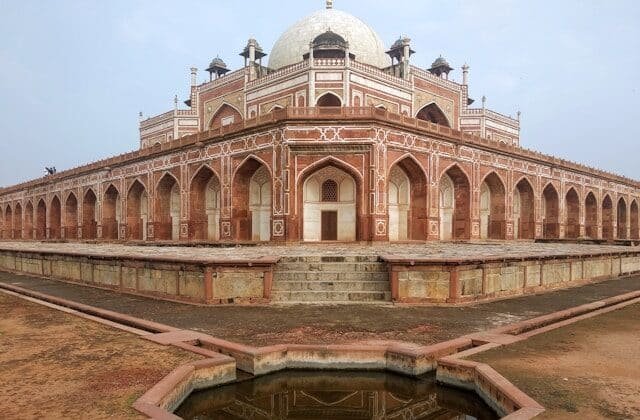
Agra, a city in Uttar Pradesh, is renowned not only for its iconic landmarks such as the Taj Mahal and Agra Fort but also for its rich cultural heritage which reflects the grandeur of Mughal architecture and traditions. The city’s historical significance has made it a focal point of cultural practices that have been preserved over centuries. At the heart of Agra’s cultural identity is its Mughlai cuisine, a culinary legacy that marries spices and recipes from Central Asia with local ingredients. Dishes like biryani, kebabs, and various sweets such as pethas are emblematic of this rich gastronomic tradition. Visitors to Agra can indulge in authentic local flavors, providing a unique gastronomic experience that speaks to the city’s history.
In addition to its culinary offerings, Taj Mahal Agra is known for its traditional arts and craftsmanship. The city is famous for its intricate marble inlay work, a technique that gained popularity during the Mughal era. Artisans in Agra continue to produce stunning marble artifacts, ensuring that this traditional craft is passed down through generations. Furthermore, the annual festivals and cultural events held in Agra showcase various forms of local art, music, and dance, representing the diverse cultural tapestry of the region.
Taj Mahal Agra’s role in preserving these cultural practices elevates its status as a significant destination along the golden triangle tourist circuit. Tourists flock to Agra not only to admire the breathtaking Taj Mahal and Fatehpur Sikri but also to immerse themselves in the local heritage. The fusion of history, art, and cuisine makes Agra a vibrant center for cultural exploration, education, and appreciation. As the city continues to balance modernization with the preservation of its heritage, it remains a vital part of India’s cultural landscape.
Modern Agra: Economy and Industry
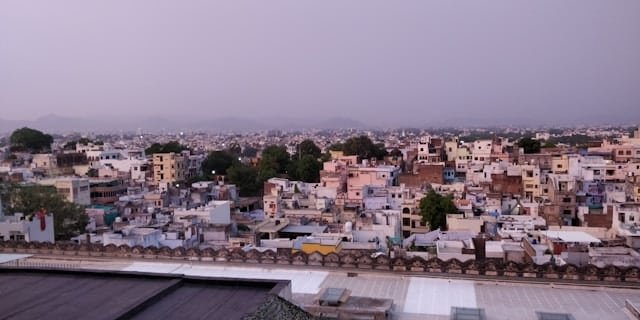
Taj Mahal Agra, a city renowned for its historical landmarks like the Taj Mahal and Agra Fort, has evolved into a vibrant modern hub, characterized by a diverse economy. The tourism industry plays a pivotal role in the city’s financial landscape, largely due to its world-famous attractions that draw millions of visitors each year. The historical significance of Agra, coupled with the magnificent architectural wonders, has positioned it as a key player in India’s tourism sector. Hotels, restaurants, and local businesses thrive as they cater to tourists seeking to explore the city’s rich heritage.
In addition to tourism, Agra boasts a robust manufacturing sector, particularly in footwear and leather goods. The city is often referred to as the “Leather City of India,” reflecting its prominence in producing high-quality leather products, including shoes, bags, and garments. A significant portion of this production is exported, contributing significantly to the city’s economy. Several small and medium enterprises have emerged, further enhancing Agra’s reputation as a leader in this industry. The craftsmanship associated with Agra’s leather goods is highly regarded, combining traditional techniques with modern manufacturing practices.
Infrastructure development has also been a focal point in Agra’s modernization efforts. The government’s initiatives to improve transportation networks and facilities have made the city more accessible for both tourists and businesses. The establishment of better roads, railway connectivity, and the expansion of the airport contribute to a more favorable environment for investment. Furthermore, the focus on improving urban amenities and services has added to the city’s appeal, ensuring that Agra remains not only a historical destination but also a vibrant economic center in Uttar Pradesh.
Climate and Best Time to Visit
Agra, located in the northern state of Uttar Pradesh, experiences a diverse climate characterized by distinct seasonal variations. The city is situated in a region that endures hot summers, a brief monsoon period, and cool winters, making it essential for travelers to consider weather conditions when planning their visit to marvel at its famous sites, such as the Taj Mahal and Agra Fort.
Summers in Agra, typically extending from April to June, can be quite intense, with temperatures soaring up to 45°C (113°F). The heat makes exploring outdoor attractions, including the stunning architecture of Fatehpur Sikri and the vibrant markets of Agra, less enjoyable. It is advisable for tourists to carry ample water and wear protective clothing during this season. Despite the heat, early morning and late afternoon visits may still provide opportunities to witness the breathtaking beauty of the city’s monuments.
The monsoon season from July to September brings relief from the heat, with temperatures ranging between 25°C (77°F) and 35°C (95°F). Although the rain nourishes the landscape and enhances the beauty of the monuments, heavy downpours can sometimes affect travel plans. Therefore, travelers should prepare for sudden weather changes while enjoying the scenic views of Agra during this time.
Finally, winter emerges in Agra from November to February, offering a delightful climate for exploration. With average temperatures ranging from 5°C (41°F) at night to 20°C (68°F) during the day, this season attracts numerous visitors seeking to stroll through the gardens of the Taj Mahal or explore the intricacies of the Agra Fort in pleasant weather. Consequently, the best time to visit Agra is undoubtedly during the winter months, allowing travelers to fully appreciate its historical and cultural richness in comfortable conditions.
Notable Landmarks in Agra

Agra, located in Uttar Pradesh, is renowned for its exceptional historical landmarks that showcase India’s rich cultural heritage. At the forefront of these is the iconic Taj Mahal, a UNESCO World Heritage Site, which is widely acclaimed as one of the most beautiful structures in the world. Built by Mughal Emperor Shah Jahan in memory of his wife Mumtaz Mahal, the Taj Mahal blends exquisite architectural design with romantic history, attracting millions of visitors annually. Its white marble façade, intricate carvings, and lush gardens reflect the height of Mughal architecture.
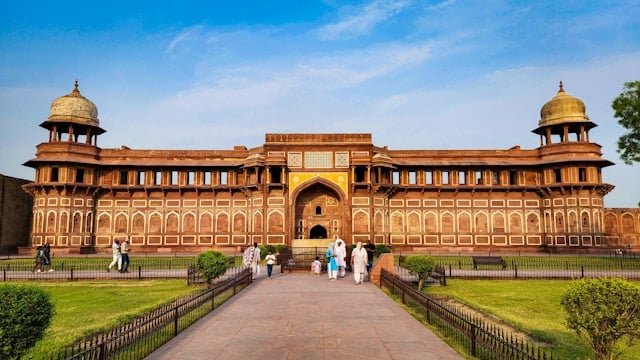
Equally significant is the Agra Fort, another UNESCO World Heritage Site, which served as the primary residence of the Mughal emperors until 1638. The fort is a magnificent example of Indo-Islamic architecture, featuring impressive gates, palaces, and mosques within its massive red sandstone walls. The fort not only served a military purpose but also became a centerpiece of Mughal culture and politics. Visitors can explore its various structures, including the stunning Jahangir Palace and the ornate Khas Mahal.
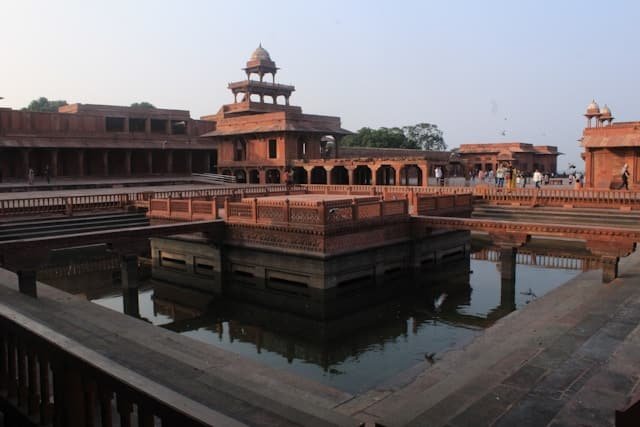
Additionally, Fatehpur Sikri, located on the outskirts of Agra, is a remarkable example of Mughal architecture and planning. It was established by Emperor Akbar in the late 16th century and served as the capital for a brief period. The city showcases a fusion of Persian, Indian, and Islamic architectural styles, with significant structures such as the Buland Darwaza and the Jama Masjid. Other notable sites in the area include the Tomb of I’timād-ud-Daulah, known as the “Baby Taj,” and Akbar’s Tomb at Sikandra, which further enrich the historical tapestry of Agra. Each of these landmarks offers invaluable insights into India’s imperial past and the legacy of the Mughal dynasty, contributing significantly to Agra’s status as a cultural epicenter.
Visiting Agra: Tips for Travelers
Agra, home to architectural marvels such as the Taj Mahal and Agra Fort, is a bustling city in Uttar Pradesh that attracts millions of visitors each year. To enhance your travel experience in this historical and cultural heart of India, several practical tips can be immensely helpful.
When planning your visit, consider the best times to explore these iconic sites. The cooler months from October to March are ideal, as the weather is pleasant for outdoor activities. Be sure to arrive early at popular attractions like the Taj Mahal to avoid the throngs of tourists. Visiting during sunrise not only allows for a less crowded experience but also presents stunning views as the monument lit up by the morning sun.
Transportation within Agra is relatively easy, with options ranging from auto-rickshaws to cycle rickshaws, or even private taxis for more comfort. It’s advisable to negotiate the fare before starting your journey, especially with auto-rickshaw drivers, as they often do not use meters. Alternatively, consider hiring a local guide who can provide transportation and enrich your visit with historical insights about Agra’s landmarks, including Fatehpur Sikri, another UNESCO World Heritage site.
While exploring Agra, adhering to local customs is essential. Be respectful when visiting religious sites and always ask for permission before photographing individuals. It’s also customary to remove your shoes when entering these sacred places. In restaurants and local markets, practice courteous behavior by greeting locals with a smile and using simple Hindi phrases such as ‘Namaste’ or ‘Shukriya,’ which can help forge connections and enhance your overall experience.
Lastly, to avoid disappointment, pre-book tickets for popular attractions online, especially during peak tourist season. This practice not only saves time but also ensures seamless access to awe-inspiring sites like the Taj Mahal and Agra Fort. By following these tips, your journey to Agra will be both enjoyable and memorable.
Conclusion: The Essence of Agra
Agra, located in the heart of Uttar Pradesh, is undeniably a city rich in historical significance and cultural heritage. Its most famous landmark, the Taj Mahal, epitomizes the remarkable architectural accomplishments of the Mughal era and continues to attract millions of visitors each year. This iconic mausoleum, alongside the majestic Agra Fort, illustrates the fusion of artistic brilliance and historical narrative, making Agra an essential destination for those interested in India’s rich past.
In addition to these UNESCO World Heritage Sites, Agra is home to Fatehpur Sikri, a historic city which serves as a testament to the ingenuity of Mughal architecture and urban planning. Visitors to Fatehpur Sikri can admire the intricate structures that exemplify the heights of Mughal artistry. Together, these sites represent a small fraction of Agra’s extensive cultural offerings, which also include traditional crafts, local cuisine, and vibrant marketplaces that give insight into everyday life in this historical city.
Moreover, Agra’s strategic location provides an ideal base for exploring the broader region of Uttar Pradesh, enhancing its appeal as a travel hub. The modern-day city seamlessly blends with its historical roots, offering visitors a unique experience that reflects both the grandeur of its past and the dynamism of its present. Therefore, it is highly recommended for tourists and history enthusiasts alike to immerse themselves in Agra’s multifaceted charm. Whether exploring the renowned Taj Mahal or wandering through its bustling streets, a visit to Agra promises a captivating journey through time.


